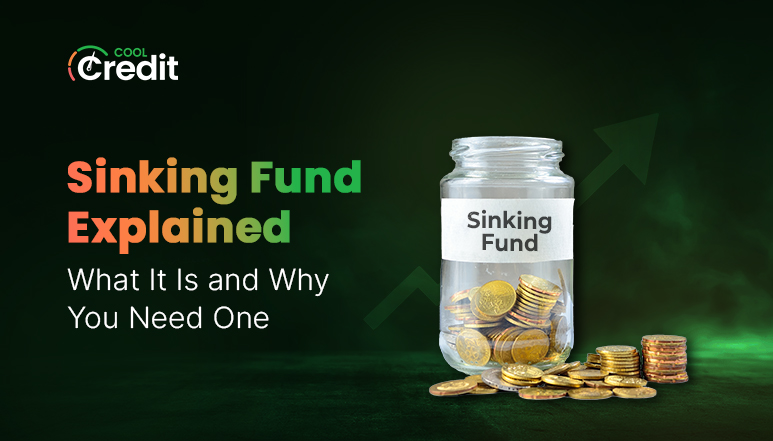
Sinking Fund Explained: What It Is and Why You Need One
Planning a vacation, home makeover, birthday bash, or grabbing those concert tickets? Instead of panicking later, start a sinking fund now!
It’s simply money you save little by little for future expenses. And trust us, it makes everything smoother when the time arrives.
| This blog covers: ✅ What exactly is a sinking fund? ✅ Sinking fund vs. savings account ✅ Sinking fund vs. emergency fund ✅ Reasons to start a sinking fund ✅ Steps to start a sinking fund from scratch ✅ 15 types of sinking fund categories |
What Exactly Is a Sinking Fund?
A sinking fund is a special type of savings fund created from regular contributions for something you know you'll need to pay for in the future. Rather than struggling to find a large sum at the last minute, you set aside smaller amounts consistently. Consequently, making the financial hit much easier to manage.
Typically, a sinking fund serves two main purposes:
- To repay debt (like bonds):
Governments and companies often use sinking funds to pay off bonds. By saving regularly, they ensure there's enough money to repay investors when the bonds mature, which also reassures investors and keeps finances stable.
- To cover big upcoming expenses:
For individuals, sinking funds are great for planning things like:
- Going on a vacation
- Buying a new car
- Handling home repairs
- Shopping for the holidays, etc.
Rebuild your credit the smart way—starting right now
Start FixingSinking Fund vs. Savings Account
A sinking fund and a savings account are related but distinct. A sinking fund is a savings strategy. On the other hand, a savings account is a bank account where you store your money securely. It often earns some interest. You can use a savings account to hold your sinking fund, or even create multiple savings accounts (or sub-accounts) for different goals.
Simply put, the sinking fund is why you're saving, and the savings account is where you're saving. Both work best when used together to build financial discipline and peace of mind.
Sinking Fund vs. Emergency Fund
A sinking fund and an emergency fund are both important tools for managing your finances, but they serve very different purposes.
When you know you’ve got to pay for something, you can use a sinking fund. In contrast, an emergency fund is money set aside for unexpected events, such as medical emergencies, car breakdowns, or sudden job loss. It acts as a financial safety net to help you avoid debt when life throws surprises your way.
Reasons to Start a Sinking Fund
1. Reduces Financial Stress by Preparing in Advance
A sinking fund helps you stay calm when big expenses come up. Instead of worrying about how to pay for things like a medical bill, school fees, or home repairs, you’ve already saved for it little by little. As a result, there’s no last-minute stress or financial pressure. All-in-all, you can react to costs by planning them.
2. Helps You Avoid Debt and High Interest Payments
When big or surprise expenses come up, many people use credit cards or take personal loans to manage them. However, these often have high interest rates. Instead, a sinking fund lets you use your own saved money to pay for these costs.
3. Brings Structure and Clarity to Your Budget
One of the best things about a sinking fund is that you can save for specific goals. In place of keeping all your money in one big savings account, you can create separate funds for different needs, like a vacation, school fees, property taxes, or holiday shopping. This way, it’s easier to track how much you’ve saved for each goal. Plus, you won’t accidentally use money meant for one purpose on something else.
4. Encourages Discipline and Consistent Saving Habits
A sinking fund helps you build the habit of saving regularly, even if it’s just a small amount. Over time, it teaches you to think about your future needs and plan ahead. Therefore, you become more disciplined with your money. Moreover, you stay with your budget and avoid impulsive spending.
5. Makes Large Expenses More Manageable
One big reason people face money problems is the sudden pressure of large expenses. A sinking fund helps by making these costs easier to handle. Instead of paying a huge amount all at once, you save smaller amounts over time. For instance, if you need ₹60,000 in six months for a course or trip, saving ₹10,000 each month is much easier than coming up with the full amount at once. This way, you stay prepared and avoid financial stress.
6. Prepares You for Known, Recurring Expenses
Not all expenses are unexpected—some happen every year or at regular times. Expenses such as insurance payments, school fees, car maintenance, or annual memberships are easy to predict. With a sinking fund, you can save ahead for these costs. As a result, they won’t mess up your monthly budget or affect your other important expenses.
7. Provides Peace of Mind and Financial Confidence
The biggest benefit of a sinking fund is peace of mind. When you know you’ve saved enough for planned or regular expenses, you feel more confident and in control. This means you can enjoy your purchases or pay your bills without feeling guilty or worried. Also, it keeps your emergency fund safe for real emergencies. Instead of using it for things you already knew were coming.
How to Start a Sinking Fund from Scratch
▪ Define a Clear Savings Goal
Start by deciding what you're saving for. A sinking fund is always tied to a specific, predictable expense. This could be a short-term goal, like an upcoming birthday party, or a long-term one, like buying a new laptop. The clearer your goal, the easier it is to stay focused and motivated.
▪ Estimate the Total Amount You'll Need
Once you know your goal, calculate how much money you'll need to cover it. Be as accurate as possible. Include all related costs, such as travel, accommodation, taxes, or delivery fees. By doing so, you’ll not fall short of money when the time comes.
▪ Set a Realistic Deadline
Decide by when you’ll need the money. This is your time frame. It could be a fixed date (e.g., “I need the money by December for holiday shopping”) or many months (e.g., “I want to buy a new phone in six months”). This deadline is crucial for determining how much you should save regularly.
▪ Break It Down into Monthly or Weekly Contributions
Now divide the total amount by the number of months or weeks you have until the deadline.
Monthly Saving Amount = Total cost ÷ Time
For example, if you need ₹60,000 in 6 months, you’ll need to save ₹10,000 each month. Breaking it down makes the goal feel more achievable and less overwhelming.
▪ Choose a Separate Place to Save Your Money
Keep your sinking fund separate from your everyday spending account to avoid accidental use. You can:
- Use a different savings account
- Open sub-accounts or labeled envelopes (if saving in cash)
- Use a budgeting or finance app with goal-tracking features
▪ Automate Your Savings (If Possible)
If your bank allows it, set up an automatic transfer from your main account to your sinking fund right after payday. Automation ensures consistency and removes the temptation to skip a month. Even a small amount saved regularly builds up over time.
▪ Track Your Progress Regularly
Check your sinking fund balance at least once a month to stay on track. You can use a spreadsheet, a budgeting app, or a notebook. Seeing your progress keeps you motivated and helps you adjust if you're behind or ahead of schedule.
▪ Stay Committed to the Purpose
Only use the sinking fund for what you planned. If it’s for car repairs, don’t dip into it for dining out or clothes. This discipline helps you reach your goal and builds strong financial habits. Once you’ve used the fund, you can start over with a new goal.
Let Experts Handle Your Credit Repair
Get Started15 Types of Sinking Fund Categories
1. Home repairs
2. Car maintenance
3. Insurance premiums
4. Vacation/travel
5. Medical and dental costs
6. Gifts and celebrations
7. Technology upgrades
8. Pet expenses
9. Furniture and appliance replacement
10. Festivals and religious events
11. Subscriptions and memberships
12. Weddings (attending or planning)
13. Childcare or daycare
14. Education and certifications
15. Property taxes or HOA fees
Conclusion
A sinking fund can help you save a significant amount over time. More importantly, it builds a strong savings habit that benefits you throughout life. So instead of using a credit card or loans, you can pay for things in full. That’s why many people and businesses set up sinking funds to stay ahead.
However, many people still struggle to stay consistent with this habit. They often rely on installment plans, which is totally okay and can work well. But there’s something special about paying with your savings. It gives you a proud, satisfying feeling because you did it all on your own, without debt or outside help.
FAQs
Q: How Many Sinking Funds Should I Have?
A: There’s no fixed number. You should have as many sinking funds as you have specific savings goals. However, the key is to keep each fund purposeful and manageable.
Q: Is a Sinking Fund a Savings Account?
A: A sinking fund is not a specific type of savings account, but rather a way to use one. It’s a strategy where you regularly set aside money in a separate account for a planned expense. So, while you might use a savings account for it, the purpose is what makes it a sinking fund.
Q: Show a Sinking Fund Example With the Given 7% Interest Rate.
A: Suppose you need ₹1,00,000 in 5 years and can earn 7% annual interest. By contributing about ₹1,580 each month into a sinking fund earning 7% interest, you’ll reach your goal without needing a large amount all at once.







